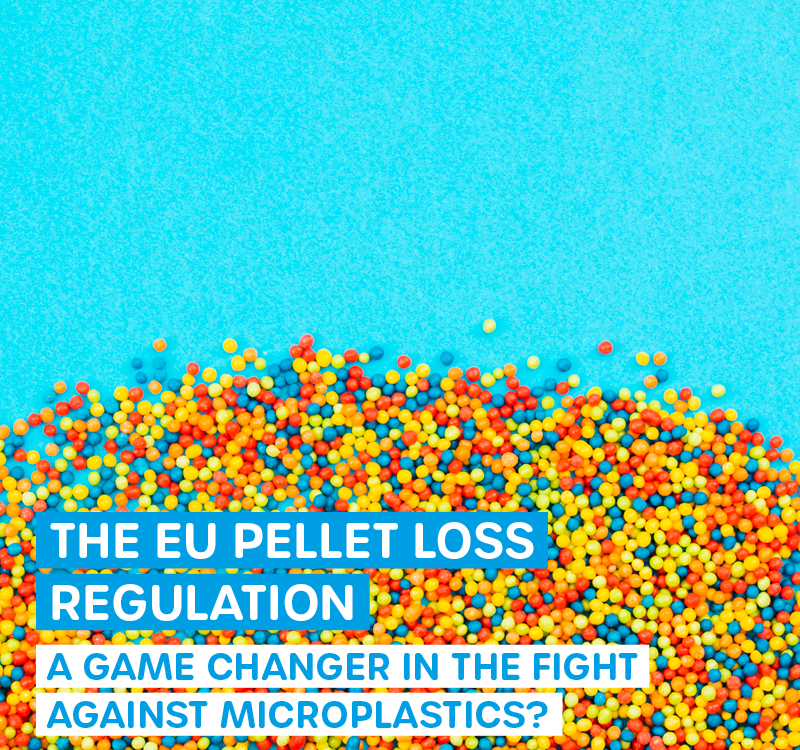
Microplastic removal: SPIONs and magnetization
8. July 2025
Microplastics in traffic jams
13. July 2025Microplastics regulation and removal from wastewater: where will we be in 2025?
The pollution of our waters by microplastics has become one of the most pressing environmental problems of our time. Tiny plastic particles, smaller than five millimeters, not only permeate our oceans and rivers, but are now also found in our drinking water and even in the human body. The challenge is complex: while research into health effects is still ongoing, policymakers and industry need to develop solutions today. We take a look at the current state of regulations and the available microplastic removal technologies.
EU regulation: first steps, but gaps remain
The European Union set an important course for 2024: The European Commission has adopted a standardized measurement method so that EU states can reliably collect information on microplastics in water. This step was long overdue, as without standardized measurement methods it is not possible to assess the current situation or document progress in reducing it.

Overview of the current status of regulations in the area of municipal sewage treatment plants © Wasser 3.0
Nevertheless, experts, including us, criticize the current requirements as inadequate. Current studies show that the EU requirements for microplastics analysis make little sense, especially in terms of sampling frequency. In our study, we found that samples need to be taken and analyzed much more frequently in order to capture both seasonal and monthly fluctuations.
At international level, an "International Negotiating Committee" was set up as early as 2022, which was originally intended to develop a legally binding instrument to combat plastic pollution by the end of 2024. These negotiations are still ongoing, but show the global dimension of the problem.
The challenge of wastewater treatment: Innovation needed
The removal of microplastics from wastewater poses completely new technical challenges for wastewater treatment plants. Conventional treatment processes are not designed for these tiny particles. There is currently little data available on the elimination performance of microplastics by wastewater treatment plants. This data gap makes it difficult both to assess the current situation and to develop targeted solutions.
The situation with industrial wastewater is particularly problematic. The textile and plastics industries are among the main sources of microplastic emissions. Here, new microplastic particles are continuously created not only through production waste, but also through abrasion and decomposition during processing.
Innovative technologies on the rise
Despite the challenges, the technology sector is developing rapidly. Several promising approaches are emerging.
With our Wasser 3.0 PE-X® technology, we have been providing answers for industry and wastewater treatment plant operators, as well as for politics, for years. With our method, we have developed the first process that enables a cost-efficient and reproducible removal of microplastics from various types of water. The method is based on a combination of different physico-chemical processes. Coupled with the unique and rapid microplastics analysis, we are able to monitor processes, determine elimination efficiencies and record data across the board for years.
Drinking water: filtration as a temporary solution
While large-scale solutions for wastewater treatment are constantly being developed, many consumers rely on water filters with hollow fiber membrane technology. Although these can partially remove microplastic particles from drinking water, they do not solve the problem at source, but only offer an end-of-pipe solution that is often not needed at all.
Although drinking water quality in Germany is considered to be very high, microplastic particles are increasingly being detected here too. Studies from 2024 show particularly worrying findings: microplastics not only accumulate in various organs, but have also been found in placenta samples, suggesting possible effects on unborn children.
Economic opportunities in the circular economy
The challenge of microplastics also holds considerable economic potential. Innovative wastewater treatment technologies enable not only the removal of micropollutants, but also the reuse of purified water. Removing microplastics can save water, energy, and costs and make wastewater recyclable.
Companies that invest in appropriate technologies at an early stage can secure competitive advantages. Sustainable process design, the circular economy and resource efficiency are inextricably linked.
Outlook: Integration into existing systems
The new EU Urban Wastewater Directive, which was adopted at the beginning of 2025, will also contain requirements for microplastics. Wastewater treatment plant operators of large wastewater treatment plants are to test for microplastics twice a year. The obligation to retrofit or expand plants accordingly is not included in this amendment.
The decisive factor will be that new technologies not only function technically, but can also be economically integrated into existing infrastructures. The focus is therefore on the development of modular, retrofittable systems. In the REMEDIES project, we are already providing wide-ranging and transparent answers to this question. In addition to a life cycle assessment and transfer of the system to the wastewater treatment plant in Mykonos and commissioning in the ongoing wastewater treatment process, we are showing how things can work in the future.
Need for action remains high
Although 2024 and 2025 have brought important regulatory progress, there is still a long way to go before microplastics are effectively controlled. The standardization of measurement methods was an important first step, but the implementation of stringent limits and the widespread implementation of suitable removal technologies are still pending.
A sustainable solution to the microplastics problem requires coordinated efforts from politics, industry and research. The combination of stricter regulations, innovative technologies and economic incentives could bring the breakthrough - if all players pull together. We are ready! But the fact is: the fight against microplastics is a marathon, not a sprint. But the first steps have been taken and the direction is right.






